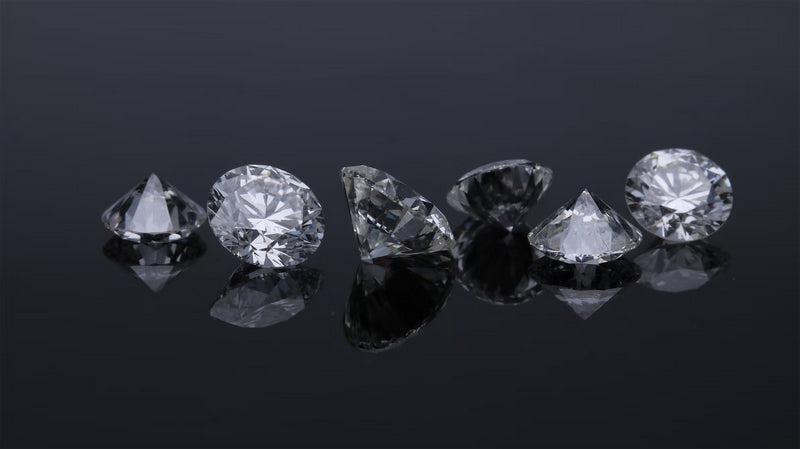
Introduction to Diamond Manufacturing
Diamonds have captivated human imagination for centuries, symbolizing both beauty and rarity. Traditionally, diamonds were formed naturally under extreme pressure and temperature conditions deep within the Earth. However, advancements in technology have allowed us to replicate these conditions in a lab. Today, diamonds are produced through two primary methods: HPHT (High-Pressure High-Temperature) and CVD (Chemical Vapor Deposition). Let’s delve into these methods to understand their differences and implications.
What Are HPHT Diamonds?
The High-Pressure, High-Temperature Process
HPHT diamonds are created by mimicking the natural conditions under which diamonds form in the Earth’s mantle. The HPHT process involves subjecting carbon to high pressures and temperatures in a lab hpht vs cvd diamonds. This method typically uses a press to generate pressures of around 5 GPa (gigapascals) and temperatures of approximately 1500°C (2700°F), similar to those found deep underground.
History and Development of HPHT Diamonds
The HPHT method was first developed in the 1950s, and its primary goal was to create synthetic diamonds that could be used in industrial applications. Over time, the technology improved, and HPHT diamonds started to find their way into the jewelry market. The development of this process was a significant milestone, enabling the production of diamonds that are visually indistinguishable from their natural counterparts.
What Are CVD Diamonds?
The Chemical Vapor Deposition Process
CVD diamonds are made using a different approach. Instead of replicating the natural conditions of the Earth, the CVD process involves depositing carbon atoms from a gas phase onto a substrate. In a vacuum chamber, gases such as methane are ionized to create a plasma, which allows carbon atoms to crystallize on a substrate, forming a diamond layer. This process operates at lower temperatures compared to HPHT, typically around 800°C (1500°F).
History and Development of CVD Diamonds
CVD technology emerged in the 1980s and was initially used for industrial purposes, such as creating hard coatings for tools. It wasn’t until the 2000s that CVD diamonds began to gain traction in the gemstone market. The technology has continued to evolve, allowing for the production of high-quality diamonds with fewer inclusions and a more controlled growth environment.
Comparing HPHT and CVD Diamonds
Quality and Appearance
When comparing HPHT and CVD diamonds, the quality and appearance are crucial factors.
Color and Clarity
Both HPHT and CVD diamonds can exhibit excellent clarity and color. HPHT diamonds tend to have a warmer color due to the conditions under which they are formed, often resulting in a yellowish hue. CVD diamonds, on the other hand, can be produced in a range of colors, including near-colorless options, due to the more controlled environment. Clarity-wise, both methods can produce diamonds with minimal inclusions, though CVD diamonds often have fewer internal flaws.
Cut and Shape
In terms of cut and shape, both HPHT and CVD diamonds offer versatility. However, CVD diamonds generally allow for more precise control during growth, which can lead to higher-quality cuts. HPHT diamonds, while also capable of being cut into various shapes, might sometimes have slight variations in quality due to the conditions of their formation.
Cost and Value
The cost and value of diamonds are significantly influenced by their manufacturing process.
Price Differences
CVD diamonds are typically less expensive than HPHT diamonds. This is primarily due to the lower production costs associated with the CVD process. Additionally, CVD diamonds can be produced in larger quantities, contributing to their more competitive pricing.
Value Retention
Regarding value retention, HPHT diamonds might have a slight edge. Due to their longer presence in the market and the perception of being closer to natural diamonds, they may retain value better over time. CVD diamonds, while offering excellent value for money, are still relatively new to the market, and their long-term value retention is less established.
Lab grown diamonds are a remarkable innovation in the gemstone industry, offering a sustainable and ethical alternative to their natural counterparts. Created through advanced technological processes that replicate the high-pressure, high-temperature conditions of the Earth’s mantle, these diamonds possess the same physical and chemical properties as mined diamonds.
Environmental and Ethical Considerations
Both HPHT and CVD diamonds offer significant advantages over mined diamonds in terms of environmental and ethical considerations.
Sustainability
Both methods are more sustainable than traditional diamond mining. HPHT and CVD diamonds reduce the need for extensive mining operations, which can be damaging to the environment. CVD diamonds, in particular, are praised for their minimal environmental impact, as they do not require large-scale excavation.
Ethical Sourcing
Ethically, both HPHT and CVD diamonds are free from the issues associated with conflict diamonds. They provide a clear advantage over mined diamonds, which can sometimes be associated with human rights abuses and conflict financing.
Choosing Between HPHT and CVD Diamonds
When deciding between HPHT and CVD diamonds, it’s essential to consider the intended use.
For Jewelry
For jewelry purposes, CVD diamonds often offer better value due to their lower price and high quality. Their controlled growth environment allows for more color and clarity options, making them an attractive choice for various jewelry pieces.
For Industrial Uses
In industrial applications, both HPHT and CVD diamonds have their uses. HPHT diamonds are preferred for applications requiring extreme hardness and durability, such as cutting tools and abrasives. CVD diamonds, with their precise control over growth, are ideal for applications requiring fine coatings and high-tech uses.
Future Trends in Diamond Manufacturing
As technology continues to advance, the diamond manufacturing industry is likely to see several exciting trends.
Technological Innovations
Future innovations may further enhance the quality and affordability of both HPHT and CVD diamonds. Advances in growth techniques, better control over diamond properties, and new applications could revolutionize the market.
Market Predictions
Market predictions suggest that the demand for synthetic diamonds will continue to grow, driven by their environmental benefits and ethical considerations. As consumer awareness increases, both HPHT and CVD diamonds are expected to gain further acceptance and prominence.
Conclusion
The choice between HPHT and CVD diamonds ultimately depends on your specific needs and preferences. Whether you’re looking for a stunning piece of jewelry or a reliable industrial tool, understanding the differences between these two synthetic diamond types will help you make an informed decision. Both HPHT and CVD diamonds offer unique advantages, contributing to a more sustainable and ethical future for the diamond industry.



.png)